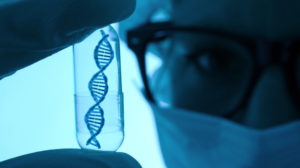Almost a decade ago, biologists Jennifer Doudna and Emmanuelle Charpentier discovered CRISPR, a DNA-editing tool. Since then, many researchers around the world have been studying how the technology can be used as a treatment for different diseases.
CRISPR, which stands for “clustered regularly interspaced short palindromic repeats,” looks at the genetic sequences of viruses that are encoded in bacteria DNA. By doing so, the infected bacteria “remembers” the attacking virus so it can fight it or cut it up. A protein known as Cas-9 (short for “CRISPR-associated”) is responsible for cutting up the genetic material of the attacking viruses.
Researchers have now worked out how to extend that technology into the epigenome with a new tool called CRISPRoff. It essentially allows scientists to turn off any human gene without editing the genetic code. Not only that, but the gene is switched off for hundreds of generations to come.
This CRISPR technology could lead to untold epigenetic therapies because the epigenome plays a vital part in many diseases, from cancer to viral infection.
This means the future of medicine and how we treat disease could all be done on a cellular level.
Read the original publication of this study here: [Genome-wide programmable transcriptional memory by CRISPR-based epigenome editing]
Learn About How Gene-Editing CRISPR Technology is Rapidly Progressing With Epigenetics.

Genome-wide programmable transcriptional memory by CRISPR-based epigenome editing
The new CRISPRoff technology can target any gene without editing it or damaging it. Instead of splicing DNA, it can use the enzyme to act on the epigenome. By targeting DNA methylation, scientists can control genes by silencing them or by using another tool called CRISPRon; they can reverse the process.
There have been concerns and predictions that the technology cannot be used on some 30 percent of human genes because they would be unresponsive. But the CRISPRoff technology shows results in all genes.
When the gene is silenced, it not only stays “off” in the treated cell, but it remains off in descendants’ cells as they divide and is predicted to do so for as many as 450 generations!
The findings suggest that the newly evolved CRISPR technology only needs to be given once for long-lasting effects. That means it could cure rare genetic disorders caused by the activity of a single damaged copy of a gene.
Takeaways:
- CRISPRoff is an excellent tool for controlling gene expression, which can be used for multiple genes at the same time without damaging any DNA.
- Silenced genes stay off in diseased cells, but also for as many as 450 generations of descendants.
- The therapeutic potential of the new CRISPR technology is exceptionally promising, though further research is needed.





